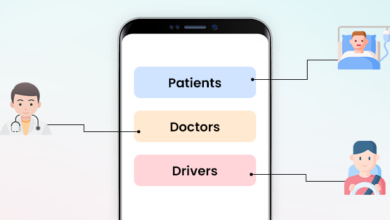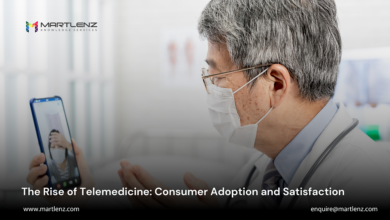
Dollar General Health Clinics DocGo A New Era of Healthcare
Dollar General Health Clinics DocGo: Imagine popping into your local Dollar General not just for groceries, but also for a quick check-up or flu shot. It sounds unconventional, but this partnership is revolutionizing healthcare access, particularly in underserved communities. This unexpected alliance is making waves, offering convenient and affordable healthcare options to those who need them most. Let’s dive into the details of this fascinating and potentially game-changing initiative.
This blog post will explore Dollar General’s strategic move into healthcare, examining its collaboration with DocGo, analyzing the patient experience, and considering the broader economic and social impacts. We’ll look at the services offered, the challenges faced, and the potential for future growth, painting a picture of a healthcare landscape reshaped by this innovative partnership. We’ll also tackle some common questions and misconceptions surrounding this unique model.
Dollar General’s Healthcare Strategy

Source: seekingalpha.com
Dollar General’s foray into healthcare represents a significant shift for the discount retailer, aiming to leverage its extensive network of stores in underserved communities to provide convenient and affordable healthcare access. This strategy reflects a broader trend of non-traditional healthcare providers entering the market, driven by factors such as rising healthcare costs and increasing demand for accessible primary care.Dollar General’s expansion into healthcare services is driven by a multifaceted rationale.
The company recognizes the significant unmet need for accessible healthcare in rural and underserved areas, where many individuals lack access to traditional medical facilities. By establishing health clinics within their existing stores, Dollar General aims to bridge this gap, providing convenient and affordable healthcare options to a population that often faces significant barriers to care. This strategy also allows Dollar General to diversify its revenue streams and enhance its brand image by associating itself with a crucial social need.
The Dollar General and DocGo Partnership
The partnership between Dollar General and DocGo is a key component of Dollar General’s healthcare strategy. DocGo, a telehealth and mobile medical provider, brings the operational expertise and medical staffing necessary to run the clinics. This collaboration allows Dollar General to focus on its retail expertise while DocGo handles the complexities of healthcare delivery. The benefits for Dollar General include increased foot traffic to its stores, enhanced brand reputation, and the generation of new revenue streams.
For DocGo, the partnership provides access to a vast network of locations, allowing for rapid expansion into underserved markets and increased patient reach. This synergistic relationship allows both companies to leverage their respective strengths to achieve a common goal.
Comparison with Other Retailers’ Healthcare Approaches
Several other retailers have explored similar healthcare strategies, including Walmart and CVS. However, Dollar General’s approach differs in its focus on particularly underserved communities. While Walmart and CVS also operate clinics, their locations tend to be more concentrated in urban or suburban areas with existing healthcare infrastructure. Dollar General’s strategy prioritizes bringing healthcare to rural areas with limited access, making its approach unique in its focus on addressing healthcare disparities.
This targeted approach distinguishes Dollar General’s strategy from its competitors and highlights its commitment to community health.
Comparison of Dollar General Health Clinic Services with Traditional Clinics
The services offered at Dollar General health clinics differ from those of traditional clinics in scope and complexity. While traditional clinics offer a wider range of services, including specialized care and extensive diagnostic testing, Dollar General clinics primarily focus on basic primary care services. This targeted approach allows for greater accessibility and affordability.
| Service | Cost | Availability | Accessibility |
|---|---|---|---|
| Basic Primary Care (e.g., check-ups, vaccinations) | Generally lower than traditional clinics | Limited hours, may vary by location | Convenient location within existing Dollar General stores |
| Chronic Disease Management (e.g., diabetes, hypertension) | May vary; often requires additional appointments | Limited availability, dependent on provider availability | Convenient location, but may require transportation to specialists |
| Telehealth Services | May be included in some plans or offered at a reduced cost | Variable, dependent on technology and provider availability | Potentially broader access for patients in remote areas |
| Specialized Care (e.g., cardiology, dermatology) | Generally not offered | Not available | Patients must seek care elsewhere |
DocGo’s Role in Dollar General Clinics: Dollar General Health Clinics Docgo
DocGo is a crucial partner in Dollar General’s ambitious plan to expand healthcare access to underserved communities. They aren’t just providing staffing; they’re the operational backbone of the entire clinic model, handling everything from staffing and medical services to technology and infrastructure. Their role is multifaceted and essential to the success of this innovative healthcare initiative.DocGo’s operational responsibilities encompass a wide range of activities.
They are responsible for staffing the clinics with qualified medical professionals, including nurse practitioners and physician assistants. Beyond staffing, DocGo manages the day-to-day operations of the clinics, overseeing scheduling, patient flow, and ensuring compliance with all relevant regulations and quality standards. This includes managing supplies, equipment maintenance, and coordinating with Dollar General on logistical aspects.
Medical Services Provided by DocGo
DocGo provides a range of basic healthcare services at Dollar General locations. These typically include routine checkups, treatment of common illnesses like colds and the flu, vaccinations, and management of chronic conditions such as diabetes and hypertension. They also offer diagnostic services such as basic lab testing and screenings. The specific services offered may vary slightly depending on the individual clinic and the availability of staff and equipment.
This model aims to provide convenient access to primary care services that were previously unavailable or difficult to access in these communities.
Technology and Infrastructure Utilized by DocGo
To support the efficient operation of these clinics, DocGo leverages a sophisticated technology infrastructure. This includes electronic health record (EHR) systems that allow for seamless data sharing and patient record management. Telemedicine capabilities may also be integrated, allowing for remote consultations with specialists when needed. Furthermore, DocGo likely utilizes robust data analytics tools to monitor clinic performance, identify areas for improvement, and track key metrics such as patient satisfaction and clinical outcomes.
This technological foundation ensures efficient operations and high-quality care delivery.
Dollar General’s DocGo clinics are expanding access to healthcare, but could they benefit from the advancements discussed in this fascinating study on study widespread digital twins healthcare ? Imagine the possibilities: personalized care plans and predictive analytics, all powered by digital twins. This could revolutionize how DocGo manages patient data and improves outcomes within their already impressive network of convenient clinics.
Challenges Faced by DocGo in Underserved Communities
Providing healthcare in underserved communities presents unique challenges. One major hurdle is recruiting and retaining qualified medical professionals willing to work in these areas. These communities often face challenges such as limited access to transportation, housing, and other essential services, which can make it difficult to attract and retain healthcare workers. Another significant challenge is addressing the social determinants of health, such as poverty, lack of access to healthy food, and inadequate housing, which significantly impact the health outcomes of the population.
Finally, ensuring equitable access to technology and addressing digital literacy barriers within the community is also critical for the long-term success of the program. DocGo’s success hinges on effectively navigating these complex factors.
Patient Experience and Accessibility

Source: brightspotcdn.com
Dollar General’s DocGo clinics are expanding access to healthcare, but even with streamlined processes, efficient documentation remains crucial. This is where advancements like those detailed in this article on nuance integrates generative ai scribe epic ehrs become incredibly relevant. Imagine the time savings for DocGo providers if similar AI-powered tools were integrated, freeing them to focus more on patient care within the Dollar General setting.
Dollar General’s foray into healthcare, partnering with DocGo to establish convenient clinics, presents a fascinating case study in expanding healthcare access. The patient experience within these clinics, and the overall impact on accessibility, particularly for underserved populations, is crucial to evaluating the program’s success. This section will explore these aspects, offering insights into both the positive and negative aspects reported by patients.The clinics’ strategic placement within existing Dollar General stores significantly improves access for individuals in rural or low-income communities.
These locations are often more accessible than traditional healthcare facilities, geographically and financially. Eliminating the need for extensive travel and reducing transportation costs are significant advantages for patients who may lack reliable transportation or live in areas with limited public transport. The convenience of integrating healthcare into daily errands also minimizes disruption to patients’ lives and schedules. This is particularly impactful for individuals who work non-traditional hours or have caregiving responsibilities.
Patient Satisfaction Survey Design
A comprehensive patient satisfaction survey should assess multiple aspects of the clinic experience. This includes elements such as ease of scheduling appointments, wait times, staff friendliness and professionalism, clarity of communication regarding diagnosis and treatment plans, cleanliness of the facility, and overall satisfaction with the care received. The survey should employ a Likert scale (e.g., strongly agree to strongly disagree) for quantifiable results and include open-ended questions allowing patients to elaborate on their experiences.
Dollar General’s DocGo clinics are expanding access to healthcare, especially in underserved areas. But the question of comprehensive care remains; I was reading this article about the struggles faced by rural hospitals, particularly regarding labor and delivery, Rural Hospitals Labor Delivery & which made me think about how DocGo’s services might complement or even potentially integrate with existing rural healthcare infrastructure to address these gaps.
Ultimately, the goal is better healthcare access for everyone, and both initiatives seem to be working towards that.
The survey should also gather demographic information (age, gender, income level, location) to analyze potential correlations between patient demographics and satisfaction levels. A simple example of a survey question would be: “On a scale of 1 to 5, with 5 being the highest, how satisfied were you with the cleanliness of the clinic?”
Hypothetical Patient Survey Results
To illustrate potential outcomes, let’s consider a hypothetical survey of 100 patients. The following bullet points summarize the categorized feedback:* Positive Feedback: Many patients praised the convenience of the clinic’s location (65%), the friendly and helpful staff (70%), and the relatively short wait times (55%). Several comments specifically highlighted the affordability and ease of access compared to other healthcare options.* Negative Feedback: Some patients reported concerns about limited services offered (20%), long wait times on certain days (15%), and a perceived lack of personalized attention (10%).
A few patients expressed concerns about the clinic’s association with a discount retailer, potentially affecting their perception of care quality.* Neutral Feedback: A smaller percentage of patients (15%) offered neutral responses, indicating neither significant satisfaction nor dissatisfaction. Their comments often focused on the clinic being “adequate” or “meeting their basic needs.” These responses often lacked specific details and suggested a relatively passive experience.
Economic and Social Impact
Dollar General’s expansion into healthcare, through its partnership with DocGo, presents a compelling case study in the potential economic and social transformation of underserved communities. By bringing affordable, accessible healthcare to areas traditionally lacking in such services, the initiative tackles both the financial burden of healthcare and the significant health disparities prevalent in these regions. The impact extends beyond individual patients, influencing the overall economic vitality and social well-being of entire communities.The economic impact of Dollar General health clinics is multifaceted.
Firstly, these clinics create jobs, both directly through employment at the clinics themselves (doctors, nurses, administrative staff) and indirectly through the increased economic activity stimulated by improved community health. Healthier individuals are more likely to participate in the workforce, contributing to local tax revenue and supporting local businesses. Secondly, the clinics offer a cost-effective alternative to traditional healthcare facilities, reducing the financial strain on individuals and families who might otherwise forgo necessary medical care due to cost.
This reduction in healthcare expenses can free up resources for other essential needs, further bolstering the local economy.
Cost Comparison with Traditional Healthcare, Dollar general health clinics docgo
Dollar General clinics aim to provide healthcare services at a significantly lower cost compared to traditional healthcare facilities like hospitals and private doctor’s offices. This is achieved through streamlined operations, reduced overhead, and a focus on providing primary care services. For example, a routine check-up at a Dollar General clinic might cost significantly less than a similar visit to a traditional clinic, making essential preventative care more accessible to low-income families.
The lower cost structure is achieved through economies of scale and a focus on efficient, high-volume, low-cost services. While specific pricing varies by location and service, the overall goal is to make healthcare more affordable and accessible. This directly impacts the economic well-being of individuals and families in these communities, freeing up resources for other needs.
Social Impact of Increased Healthcare Access
Increased access to healthcare in underserved areas has profound social consequences. Improved access translates to earlier diagnosis and treatment of chronic conditions like diabetes and hypertension, preventing more severe and costly health problems down the line. This improved preventative care leads to fewer hospitalizations and emergency room visits, reducing the overall burden on the healthcare system. Moreover, improved health leads to improved educational attainment and employment opportunities, fostering economic growth and social mobility within the community.
The social benefits extend to families, reducing the stress and disruption caused by illness and enabling greater participation in community life.
Improved Health Outcomes through Increased Accessibility
The increased accessibility of healthcare through Dollar General clinics has the potential to significantly improve key health indicators in underserved communities. The following table projects potential improvements based on similar initiatives and epidemiological data:
| Health Indicator | Projected Improvement (Percentage Change) | Rationale |
|---|---|---|
| Hypertension Control Rate | +15% | Increased access to regular check-ups and medication management. |
| Diabetes Control Rate | +12% | Improved access to preventative care, education, and medication. |
| Childhood Immunization Rates | +20% | Increased convenience and affordability of vaccinations. |
| Early Cancer Detection Rates | +8% | Increased access to screenings and preventative care. |
These projections are based on the assumption that increased access to affordable healthcare leads to improved preventative care, early detection of diseases, and better management of chronic conditions. Real-world examples from similar community health initiatives support these projections, showing a clear link between increased access and improved health outcomes. For instance, studies have shown that improved access to primary care is associated with a significant reduction in hospitalizations and mortality rates, particularly among vulnerable populations.
Future of Dollar General Health Clinics
The Dollar General health clinic model, while innovative, faces a complex future shaped by both significant opportunities and considerable challenges. Its success hinges on adapting to evolving healthcare landscapes, addressing potential logistical hurdles, and strategically expanding its reach and services. The coming years will determine whether this model becomes a significant player in accessible, affordable healthcare or remains a niche experiment.
Potential Challenges and Opportunities for Growth
The expansion of Dollar General health clinics presents a unique blend of opportunities and challenges. A primary opportunity lies in addressing healthcare deserts, bringing basic medical services to underserved rural and low-income communities. This directly combats the widening healthcare access gap, a significant issue in the US. However, challenges include recruiting and retaining qualified medical professionals willing to work in these often less desirable locations.
Another challenge is managing the potential for increased demand exceeding the capacity of these smaller clinics, requiring efficient appointment scheduling and potentially leading to longer wait times. Successfully navigating these challenges will be crucial for sustainable growth. The potential for increased competition from established healthcare providers and other telehealth initiatives also needs careful consideration. For example, CVS MinuteClinics already occupy a similar market space, requiring Dollar General to differentiate its offerings effectively.
Closing Notes

Source: yimg.com
Dollar General’s venture into healthcare, in partnership with DocGo, presents a compelling case study in accessibility and affordability. While challenges remain, the potential for positive impact on underserved communities is undeniable. The convenience and cost-effectiveness of these clinics could significantly improve health outcomes for many, reshaping the way we think about accessing essential healthcare services. The future of this model is certainly worth watching, as it could inspire similar collaborations and innovations across the retail landscape.
Detailed FAQs
What insurance plans are accepted at Dollar General clinics?
Insurance acceptance varies by location and clinic. It’s best to check with your specific clinic or DocGo directly to confirm which plans they accept.
Are appointments necessary, or can I just walk in?
This depends on the clinic and the service needed. Some services may require appointments, while others may offer walk-in options. Contact the clinic beforehand to confirm.
What types of specialists are available at these clinics?
Typically, these clinics focus on primary care services. Specialized care may require referral to a larger facility.
How do I find the nearest Dollar General health clinic?
You can usually find a clinic locator on the DocGo website or the Dollar General website.





